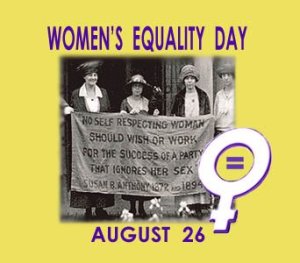Sorry if I’ve been blogging less lately, there are to many things going on to take the time to blog! That said, I wanted to share with you some information you might find interesting.
1. A key Title IX ruling was recently passed down that has implications for girls and women in sport. In essence the judge ruled that cheerleading can not count towards compliance with Title IX.
2. Look for more changes regarding the way in which the NCAA calculates and oversees their Academic Progress Rates (APR). New data analysis reveals that current standards may be weaker than originally intended.
3. On the youth sport news front, The UNICEF Innocenti Research Centre commissioned and released a new report on PROTECTING CHILDREN FROM VIOLENCE IN SPORT: A review with a focus on industrialized countries. The report focuses on the fact that “it has become evident that sport is not always a safe space for children, and that the same types of violence and abuse sometimes found in families and communities can also occur in sport and play programmes. Child athletes are rarely consulted about their sporting experiences, and awareness of and education on child protection issues among sport teachers, coaches and other stakeholders is too often lacking. Overall, appropriate structures and policies need to be developed for preventing, reporting and responding appropriately to violence in children’s sport” (p.vii)

New espnW logo
4. I have two related bits I’ve recently been involved with regarding big sport brands wanting to create social change. What they also have in common is both initiatives have women in charge. You can imagine I’m a bit skeptical on both, but I’m currently cautiously optimistic on both fronts.
The first is the new ESPN initiative to capture more female consumers–it is called espnW. (the “W” stands for Women). Its launch has gotten a little media buzz. I will keep you posted as I’ve been in communication with the folks at ESPN who are spearheading this new initiative. They are lead by a very sharp woman and her small staff and I believe the resources ESPN has dedicated demonstrates a desire to get this right (unlike Sports Illustrated for Women, which was a miserable failure). So far the process seems on target as they are asking key stakeholders to join the conversation and provide insight. Added NOTE (7/28/10): Read the MinnPost article titled “Media critic and women’s sports advocate Mary Jo Kane is about to step into the belly of the ESPN beast”
The second initiative is a project of the Nike Social Innovation team, also lead by two sharp women. Nike wants to use current sport science research to help leverage their resources and brand to promote and sustain physical activity in the US and UK. I was asked to be part of a multidisciplinary think tank facilitated by ShiftN (a really cool company) earlier in the month where we examined a research-based systems model of the correlates, barriers and potential outcomes of physical activity.
I am excited and honored to be a part of both these initiatives, however I am both happy and concerned that women are at the helm of these new, risky initiatives. I’ve written in an earlier post about the research on the glass cliff and I wonder if this is what is operating in the background in these instances where two big brands are taking risks.
While the glass ceiling is metaphor commonly used to describe the often subtle and unseen social-structural gendered barriers that prevent women from reaching the highest echelons of corporate leadership.
The glass cliff is a similar metaphor used to describe the phenomenon of women’s appointments to precarious leadership positions. The glass cliff illuminates the stress experienced by women who have made it through the glass ceiling (i.e., Head Coaches, CEOs, Presidents of WNBA teams) and find themselves in a more vulnerable and precarious position than their male counterparts. Women on the glass cliff often fight an uphill battle for success, without the support, information and resources needed to effectively execute the job.
Researchers have recently uncovered that when organizations are in crisis and have a high risk for failure, women are more often appointed to positions of leadership. Two explanations are offered: 1) women are perceived as particularly well-suited to manage the crisis, or 2) women are appointed to glass cliff positions because those who appoint them want to protect men (or expose women).
I hope I’m wrong, because the women I’ve met and talked to in charge of these initiatives are movers and shakers I want to see succeed in their visions.
 Today is Women’s Equality Day. Some may wonder why such a day exists, or that because women are achieving at all levels, why such a day should exist. Here are a few facts that point to the idea that women are far from achieving equality and Women’s Equality Day is still needed:
Today is Women’s Equality Day. Some may wonder why such a day exists, or that because women are achieving at all levels, why such a day should exist. Here are a few facts that point to the idea that women are far from achieving equality and Women’s Equality Day is still needed:






